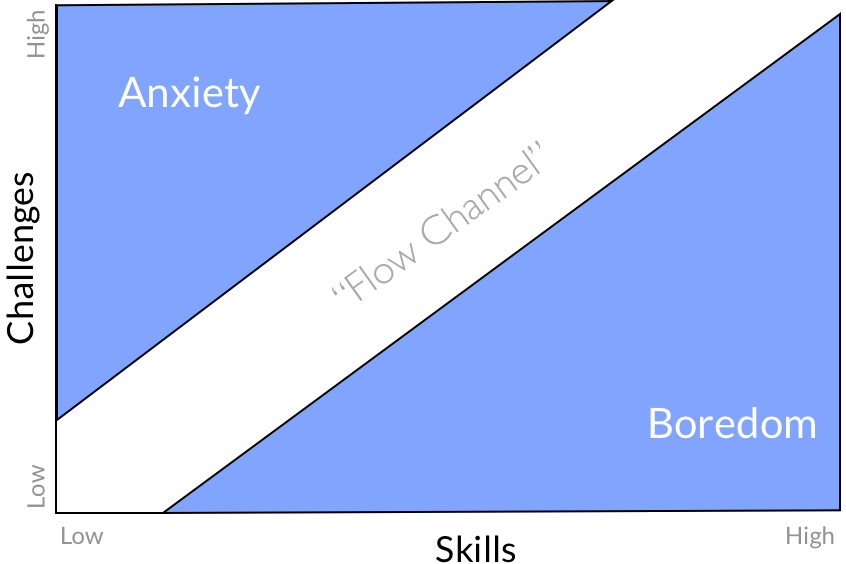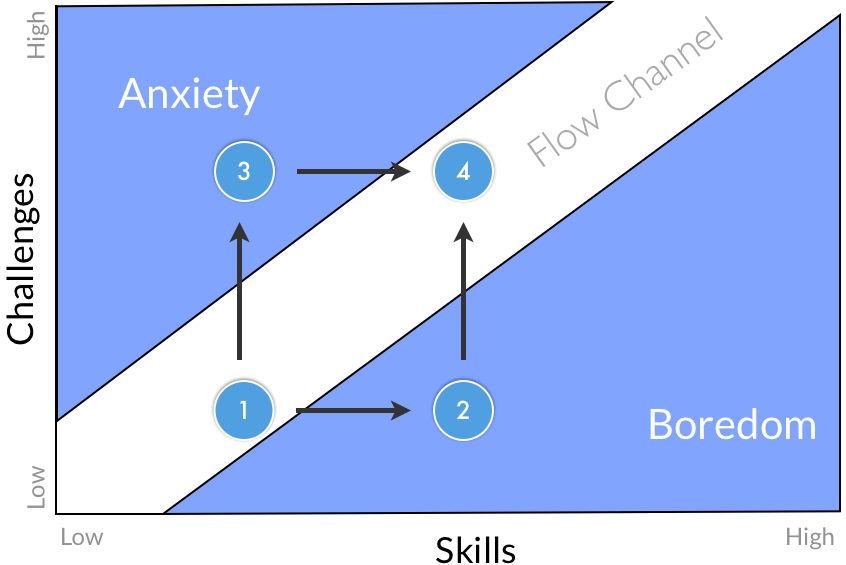How to ‘Flow’: The Most Magical Chart You’ll Come Across Today
Flow is that magical place where you’re completely absorbed in what you’re doing, where time seems to pass so fast it’s like it doesn’t exist at all.
In Flow: The Psychology of Optimal Experience, Mihaly Csikszentmihalyi introduces this graph:
Here’s what the chart is about, in a nut:
Every activity that you do falls somewhere on this chart, depending on how challenging it is (to you), and how many of your skills it utilizes
The ideal place to be is, you guessed it, in the “Flow Channel”. In the Flow Channel, the challenge of what you’re doing is roughly equal to the skills you have to do that thing. Especially when you’re motivated to get something done, this is where you’ll experience flow, and be the happiest
In Flow, Csikszentmihalyi uses learning to play tennis as an example to illustrate how you can experience flow:
1: Your starting point
Here, you’re playing tennis for the very first time.
You’re practicing serving the ball over the net (which is tricky, but manageable at first), and trying to hit the other side of the court from your side (or something – I’ll admit, I have no idea how to play tennis).
At this point, you’re experiencing flow, because the challenge of what you’re doing is roughly equal to your skill level, and you’re having fun.
From this starting point, one of two things can happen:
You move to “2”. You improve your skills to the point where you get bored of just hitting the ball over the net. The challenge of playing is now lower than your skill level, and you longer experience flow
You move to “3”. You challenge yourself at a level that stresses you out – for example, you decide to play a tennis-loving friend of yours, and she kicks your ass. Here, the challenge of playing is greater than your skill level, and you no longer experience flow
Depending on where you’re at, there are two ways to get back to the Flow Channel.
If you’re bored (“2”), you will need to find a way to increase the challenge of playing, like by finding an opponent whose skill level is roughly equal to yours
If you’re anxious (“3”), you will need to work on improving your tennis skills to get back in the Flow Channel (You could also decrease the challenge, but that’s more difficult in practice)
According to Csikszentmihalyi, this:
“Explains why flow activities lead to growth and discovery. One cannot enjoy doing the same thing at the same level for long.
We grow either bored or frustrated, and then the desire to enjoy ourselves again pushes us to stretch our skills, or to discover new opportunities for using them.”
Every single activity you perform falls somewhere on this diagram, and according to Csikszentmihalyi’s research, the activities that let you experience flow are the ones that will make you the happiest.
The challenge becomes, then, is to adjust either the challenge or your skill level of the activities you do to experience flow more often.







